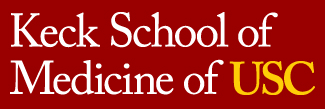New, advanced technologies continue to change life around us at an increasing pace, and the public health field is no exception. Some were not originally intended for public health, but have now become extremely beneficial. Others are directly designed for health management enhancement. Here are four technologies that have the ability to reshape public health both in the field, as well as in academia:
Geo-Spatial Applications
GIS-based tools and spatial translation of data has revolutionized how agencies and public health officials discover, identify, track, contain, and resolve public health incidents. Tools that were once the domain of surveyors and cartographers are now widely available and extremely affordable. Further, when combined with cloud storage, these spatial tools provide huge decision-making advantages for responding in real-time to public health issues.
Computer-Driven Modeling
An accident happened one day with a popular online role-playing game, World of Warcraft. Blizzard, the game maker, found code that accidentally caused a bug to travel between accounts if two players had contact within the game. The "virus" spread with an alarming rate. However, what was more alarming and interesting was the human behavior behind the characters. Some ran from the virus in the digital world, some ran to it. Some purposely spread it. All the behavior was captured in the data records. The Centers for Disease Control and Prevention got wind of the event and asked to study the information. Today this type of modeling has created powerful tools by which responders can virtually see what an outbreak may likely do in a community, with today's modern networks and transit. It has revolutionized testing for public health behavior.
Mobile Technology
With the advent of smartphones and tablets, portable technology has redefined what research tools can be used in the field. Combined with internet access, many of these tools now utilize powerful science apps designed for public health fieldwork. Everything from basic biological measurement and testing of samples, to video and digital transmission for on the spot diagnosis is now possible. It has connected public health workers around the globe and has connected the field to the lab.
Open Source Solutions
Public health researchers can work in silos and it may take years to solve a large-scale health issue. So what would happen if ten thousand researchers worked continuously on the same problem with a shared platform? It's likely that solutions will be found faster and with more input, from multiple perspectives. The capabilities of open source technology and thinking continues to help solve public health challenges. One example is the tracking of TB treatments more accurately among the poor populations of the world. According to ONE, Operation ASHA “created the eCompliance project to combine biometric technology, deployed by community health workers to ensure continuous and effective delivery of antibiotics to TB patients in India.”
Similarly, information sharing and computing power lets researchers and practitioners sort through large sets of data in seconds.
Uniting technology and public health management, the online MPH program at USC teaches students about cutting-edge technologies used in public health. Learn more and consider a Master of Public Health online through the Keck School of Medicine of University of Southern California.
Sources
http://www.phi.org/focus-areas/?focus_area=technology-innovation

